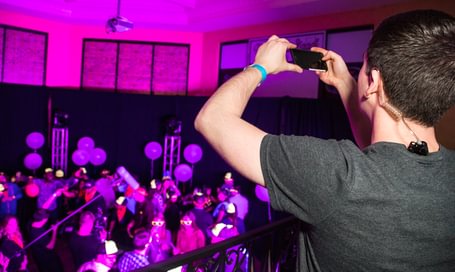Setting the Tone Through Advanced Color Grading

Color grading is the secret sauce for the most decadent videos (or just any video you want to look great)
Get ready to dive headfirst into a vibrant world of advanced color grading techniques.
We'll unlock the mysteries behind tools like LUTs and curves, unearth tips for crafting mood-altering visuals, and unveil why color consistency is your secret weapon.
So grab your virtual paintbrushes and buckle up.
Correct Before You Grade
Before you play with your color grade, you need to make sure you’re looking at color correct footage. The goal here is to give yourself a natural color state before playing with the artistic decisions.
Is the white balance right? Does your white look white or off white?
Do the skin tones look correct? Too much green spill?
In a perfect world, the footage will be captured without any issues.
In a less perfect world, you’ll have a color card filmed to reference.
In the real world, you might not have things perfect on either of the above.
In any case, starting with color correct footage gives you a level playing field for developing ‘the look’ you want in your color grade.
Understanding the Color Grading Process
Color grading is like painting with light.
It manipulates your footage's colors to achieve a desired look or mood. Think of it as a virtual art studio where you have full control over the palette. Adjusting brightness, contrast, saturation, and hue allows you to transform an ordinary scene into an extraordinary visual experience.
But don’t forget.
The impact of color grading must be balanced. It sets the tone, enhances storytelling, and leaves a lasting impression on your audience.
Different Tools, Different Strokes
When it comes to color grading, you have an arsenal of tools.
Let's explore a couple of them:
Look-Up Tables (LUTs): These little wonders are like filters for your footage. Their predefined color grading can be applied to achieve a specific look or style. Whether you want a vintage vibe or a futuristic feel, LUTs are your go-to friends. You can use pre-made LUTs or custom ones to experiment and create your unique visual signature. The downside? You can’t quite manipulate raw footage with LUTs in the same way you can with a custom grade on each clip.
Curves: Curves are powerful tools that allow you to fine-tune the brightness and contrast of different tonal ranges within an image. Play with the curves, shape the shadows, embrace the highlights, and create a visual symphony that mesmerizes your audience.
Creating Moods and Tones
Color can evoke emotions and set the mood for your video.
Here are some tips to help you create specific vibes through color grading:
Warm vs. Cool Tones: Adjusting the color temperature can make your footage feel cozy or chilling. Warm tones create a sense of intimacy, while cool tones can create a more detached or suspenseful atmosphere. So, temperature control is the key whether you're aiming for a heartwarming documentary or a thrilling suspense film.
Contrast and Saturation: Adjusting contrast and saturation can enhance the flavor of your footage. Higher contrast can add drama and boldness, while lower contrast can create a softer and dreamier look. Playing with saturation levels can intensify or mute colors, allowing you to control the visual impact of your video.
Selective Color Grading: Sometimes, it's not about the whole picture; it's about specific elements within it. Selective color grading lets you highlight certain colors, objects, or people in your frame. By isolating and enhancing those elements, you create visual contrasts and direct your audience's attention to what truly matters in the scene.
The Color Consistency Conundrum
Imagine watching a movie where the colors change from scene to scene, leaving you utterly confused. Not a pleasant experience, right?
Color consistency ties everything together.
Maintaining a cohesive color grading throughout your video project creates a seamless and immersive viewing experience. Be meticulous in your approach—use color charts and reference images, and establish a solid color grading workflow from the beginning. Your audience will thank you for it.
At the same time, your view on color can change to move the story along. For example, starting gray and gloomy then shifting to warmer and saturated. This approach to color only works when it's well orchestrated.
Armed with tools like LUTs and curves and the knowledge of creating specific moods and tones, you're ready to make your work more (or less) colorful.
Remember, color grading is an art form that allows you to express your creativity and enhance the visual impact of your videos.
So, dive in fearlessly, experiment boldly, and create stunning visual styles that leave your audience begging for an encore.
Still not sure where to start?
Reach out today and let’s create something fascinating.

